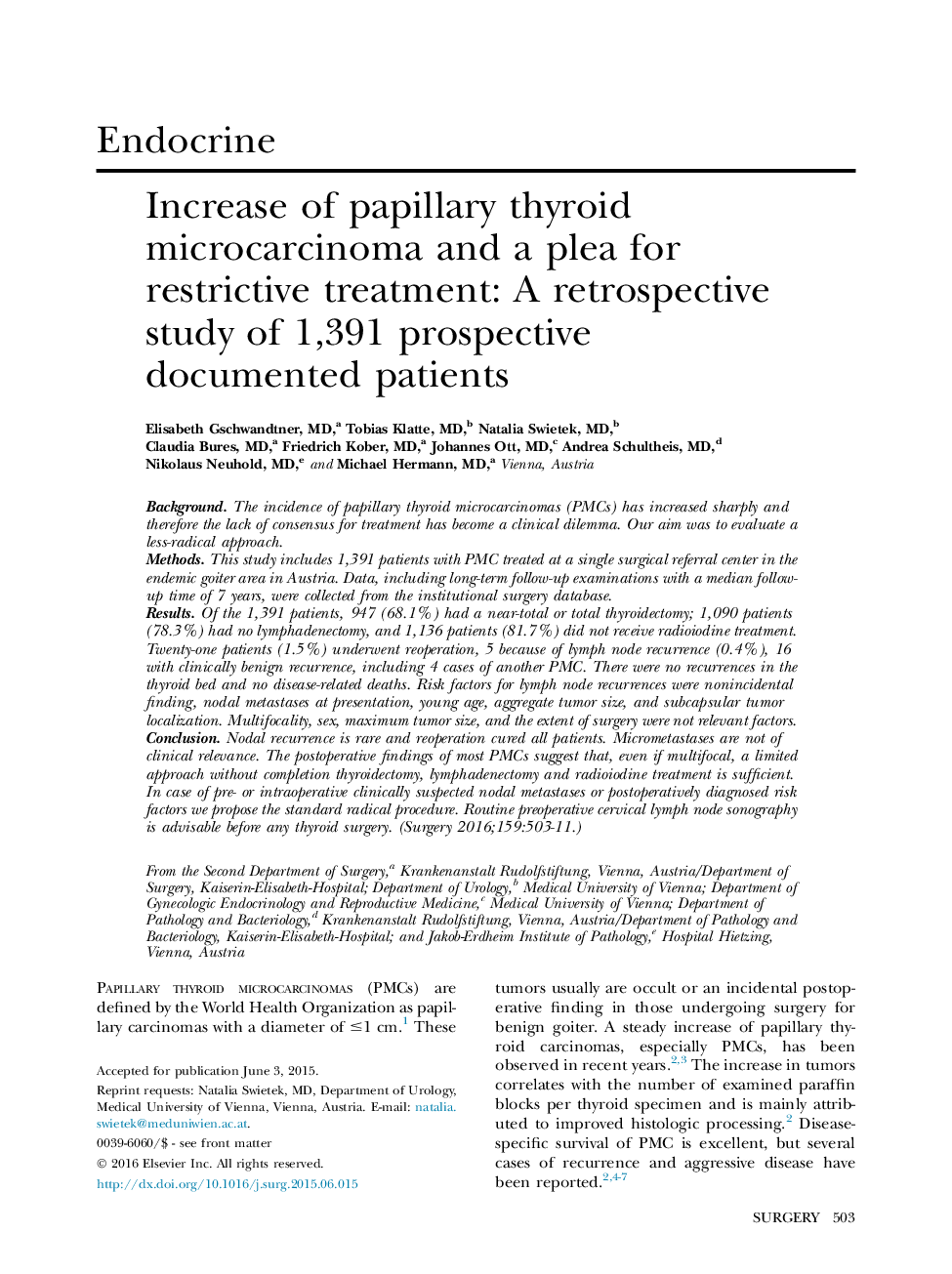| Article ID | Journal | Published Year | Pages | File Type |
|---|---|---|---|---|
| 4306460 | Surgery | 2016 | 9 Pages |
BackgroundThe incidence of papillary thyroid microcarcinomas (PMCs) has increased sharply and therefore the lack of consensus for treatment has become a clinical dilemma. Our aim was to evaluate a less-radical approach.MethodsThis study includes 1,391 patients with PMC treated at a single surgical referral center in the endemic goiter area in Austria. Data, including long-term follow-up examinations with a median follow-up time of 7 years, were collected from the institutional surgery database.ResultsOf the 1,391 patients, 947 (68.1%) had a near-total or total thyroidectomy; 1,090 patients (78.3%) had no lymphadenectomy, and 1,136 patients (81.7%) did not receive radioiodine treatment. Twenty-one patients (1.5%) underwent reoperation, 5 because of lymph node recurrence (0.4%), 16 with clinically benign recurrence, including 4 cases of another PMC. There were no recurrences in the thyroid bed and no disease-related deaths. Risk factors for lymph node recurrences were nonincidental finding, nodal metastases at presentation, young age, aggregate tumor size, and subcapsular tumor localization. Multifocality, sex, maximum tumor size, and the extent of surgery were not relevant factors.ConclusionNodal recurrence is rare and reoperation cured all patients. Micrometastases are not of clinical relevance. The postoperative findings of most PMCs suggest that, even if multifocal, a limited approach without completion thyroidectomy, lymphadenectomy and radioiodine treatment is sufficient. In case of pre- or intraoperative clinically suspected nodal metastases or postoperatively diagnosed risk factors we propose the standard radical procedure. Routine preoperative cervical lymph node sonography is advisable before any thyroid surgery.
